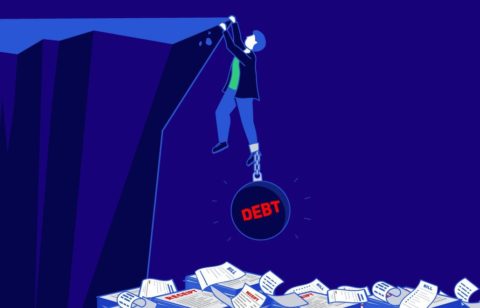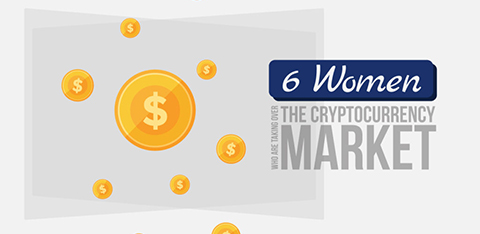Charles Ellis was an investor who, 50 years ago, found that conscientious financial analysts and hard-working portfolio managers were able to outperform the stock market on a routine basis.
But then things changed.
Information about the stock market became so widely distributed that institutional investors were able to do better than individuals to the point where in Ellis’ view it had become unrealistic for people to try to beat the market.
Spinning their wheels
But then things changed again.
More and more financial experts now believe that investors that buy anything other than index funds to reach their financial goals are just spinning their wheels. The reality is that even the top managers of active portfolios cannot consistently beat the stock market and that investors would be better off investing in low-cost index funds. S&P Global, the analytics and financial information giant, has the evidence to prove this point. When comparing the S&P indices vs. active indices it found that 90.2% of US funds that were actively managed couldn’t beat their benchmarks when their returns were calculated less their fees.
Refusing to accept objective data
The type of report quoted above has been around for many years yet passive or index funds still only make up only 33% of all mutual fund investments. While this is up from 25% of all assets in 2013, it means that nearly 66% of professionals and individuals just won’t accept this objective data or choose to ignore it.
Why this delusion?
Why do people kid themselves that they will be able to beat the stock market? The bottom line is that they won’t be able to. Numerous investors want to think that some firm, some person or some amazing algorithm can provide better returns than the market because they have been told this by the investment industry.
In addition, it was condescendingly proclaimed early on by the asset management companies that indexing was just “for losers” and that people who invested in index funds we’re just settling for average performance. While the investment industry’s tactics have evolved it’s clear that companies are still making big advertising buys and touting the fact they will beat the market when the unvarnished truth is that they will not deliver market-beating performance on a consistent basis over time.
Develop a better understanding
Before you commit to anything, you need to make sure you have an understanding of what you are up against. It is just like refinancing your debts or choosing the right debt solution. For you to be successful, you need to get to know your options thoroughly. The same is true for investments. If you continue to think you can do better than index funds you better think again. If you’re wasting energy and time trying to find investments that will beat the market this will only divert you from planning other important matters. The fact is that indexing makes everything simpler. Index funds not only deliver better returns over time but when you put your money in them you can then focus on developing a better understanding of yourself and your situation.
How index funds work
The simple explanation is that index funds mirror the performance of indexes such as the S&P 500. For example, the Vanguard® Index fund buys all or a representative selection of the securities in the S&P 500. The objective of this fund is to mimic how a specific market benchmark performs as closely as it can. This is why they are sometimes referred to as “passively managed” funds.
Beyond this, here’s a short video from Vanguard that explains the differences between an index fund, a mutual fund and an ETF.
Over the long-term
Investing in an index fund is not a guarantee that you’ll never lose money. When there’s a bear market your fund will go down but then back up in a bull market.
Low-cost
Index funds hold their investments until the indexes themselves have changed so this generally means lower management fees and cheaper transaction costs. They also provide a huge amount of diversification because they provide exposure to literally thousands of securities in just one fund. In fact, the expense ratio of the average Vanguard expense fund is 82% less than the industry average. Historically the return on the S&P 500 has been around 10% to 11%, which is pretty good. In fact, one of the worst things you can do is get out of an indexed fund during a downturn so that you miss the recovery.
 Less taxable income
Less taxable income
Broad-based index funds usually do not trade as much as funds that are actively managed so they typically generate less taxable income.
Many types
There are many different types of indexes that track different kinds of companies. The biggest and most famous of these are:
• The S&P 500, which is an index of the 500 companies that are among the biggest and best companies in America. Just think of a big American manufacturer such as Ford Motors, Black & Decker, Hershey, Deere, Marriott, Wal-Mart and Gillette and you’ll find them in the S&P 500. In fact, the S&P 500 is often used as a sort of a benchmarking for the entire stock market. So if it rises 5%, people will say that the market has risen 5%. Historically, the return of the S&P 500 has been around 10-11%, which is pretty good. The key here is to hold on for the long term. If you get nervous during a downturn and sell, you’ll probably miss the recovery.
• The Wilshire 5000 – This index includes nearly every American stock both large and small. It got its name from the fact that at one time there were 5000 such companies. It now actually includes the stocks of 6500 companies, which is why it’s often called the “total market” index.
• The Dow Jones industrial average. This is the average of 30 of the U.S.’s largest companies such as Wal-Mart, Microsoft, McDonald’s and Coca-Cola. It is, without question, the most famous of all indexes and is often referred to as just “the Dow”. It is also more than 100 years old making it America’s oldest index.
In summary
Index funds don’t always come out ahead in any given year. In fact, they usually fall somewhere in the middle of the pack. That’s because by definition they provide an average market return – no more and no less. However, over the course of 10, 20 or 30 years they move to the top so that while they return only an average profit in the short term they will deliver above-average returns in the long run.
Frequently asked questions about index funds
Q. Which index funds have the lowest fees?
A. Index funds have expense ratios that are the lowest in the industry at 0.05% and 0.16%. Given these numbers it doesn’t make much of a difference which fund you choose unless you are making a substantially large investment such as $100,000 or more.
Q. Which index funds pay dividends?
A. Most index funds do not pay dividends as they include stocks that don’t pay dividends. So there are no dividends to pass on to shareholders. If it’s important for you to earn dividends, you will need to choose special index funds such as Vanguard High Dividend Yield Index Fund or the Vanguard Dividend Appreciation Index Fund.
Q. Who manages index funds?
A. Since the goal of an index fund is to mimic the behavior of a certain index such as the S&P 500, no one actively manages them. In fact, they are called passively managed funds. The money that goes into an index fund is automatically invested proportionately into individual bonds or stocks based on the percentage of their market capitalizations. For example, if IBM represents 1.5% of the S&P Index then $1.50 will automatically go into IBM stock for every $100 invested.
Q. Where to purchase index funds?
A. You can just go to Vanguard to buy a Vanguard fund. You can also open accounts and buy index funds through brokerages such as E*TRADE, Schwab, Ameritrade, Scottrade or Zecco. Getting started with any of these brokerages is about the same. You sign up online, provide your checking account information and then begin buying.
Q. What are index funds and ETFs
You’ve already what an index fund is. An ETF or Exchange-traded Fund is an investment fund traded on stock exchanges, much like stocks. Most ETFs track an index, such as stock index or bond index. By the end of 2015, ETFs offered 1,800 different products that covered almost every conceivable niche, market sector and trading strategy.





